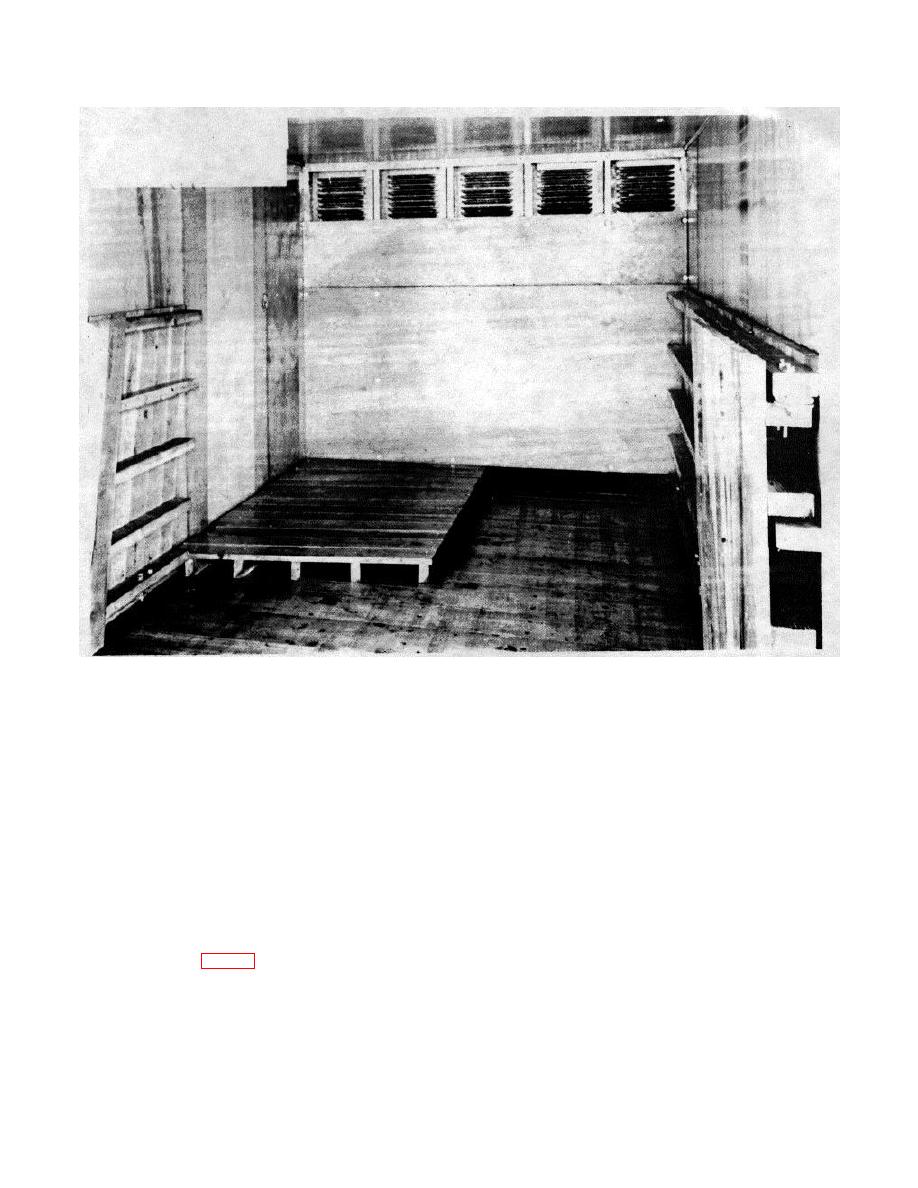
TM 55-203
Figure 2-3. Interior view of railway car (ice), refrigerator, 56 -inch gage,
50-ton, 8-wheel, foreign service.
products. Other types include the depressed-center cars
conventional type may be equipped with tank baffles or
shown in figure 2-5(2), used for moving tall objects
even with multiple compartment tanks.
where maximum clearances are required.
b.
Usage. Approximately 300 different liquid
2-7. Tank Cars
or semiliquid commodities are transported in tank cars.
These products include crude oil; fuel oil; lubricating
oils; gasoline; kerosene; alcohols; acids; alkalis; coal-tar
a.
General. Except for their superstructure
products; chlorine; bleaches; insecticides; fungicides;
(tank) and a modified underframe, tank car components
animal, vegetable, and fish oils; fruit juices; milk; paint;
are similar to those of other types of cars. Tank car
varnishes; lacquers; and compressed gases. In addition
underframes are designed and built without load-bearing
to the conventional tank cars, there are special ones
side sills between bolsters. The weight of the tank
such as those with removable tank units and those with
superstructure with lading is 'borne by the center sills,
wooden tanks. These types require anchorage features
with the main anchorage and bearing at the bolsters. A
different from cars of the conventional single-tank
conventional tank car (fig 2-6) consists of a tank, usually
pattern. As special purpose tank cars have little or no
steel, mounted on a special underframe. Draft 'gear,
military application, only conventional tank cars will be
couplers, brake gear, and trucks are similar to those of
discussed in this manual.
The Department of
other cars of the same load design. The ordinary tank
Transportation
(DOT)
issues
regulations
and
car has a single-compartment tank equipped with dome
specifications for tank cars, because flammable and
safety valves and bottom outlets Other tank cars of the
2-4



 Previous Page
Previous Page
